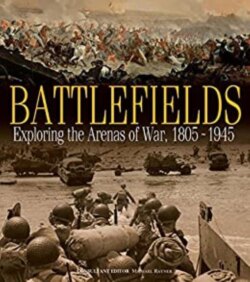Читать книгу Battlefields - Michael Rayner - Страница 13
На сайте Литреса книга снята с продажи.
NAPOLEON’S PLAN
ОглавлениеNapoleon’s initial appreciation was that the Allies would attack at Kobelnitz, but during the night the sounds of movements convinced him that they would actually go further south towards Telnitz and Sokolnitz. This suited him well for, provided Davout could frustrate their attempt to cut him off from Vienna, they would be encouraged to reinforce their left wing by withdrawing troops from the centre. The allied right, under General Bagration, would be held by the Santon position and the V Corps of Marshal Lannes, supported by Murat’s reserve cavalry and Bernadotte’s corps. Once the enemy centre was weakened, his main counterattack would be made by IV Corps in the centre, under Marshal Soult, with the divisions of St Hilaire and Vandamme. The Imperial Guard and Oudinot’s Grenadiers would form a strong reserve.
Napoleon met Emperor Francis II of Austria on 4 December and agreed an armistice, embodied in the harsh terms of the Treaty of Pressburg, which was signed on 26 December 1805.
At first the allied attacks were successful at both Telnitz and Sokolnitz, but staff and command failures denied them consolidation and General Legrand’s division was able to hold the situation. A thick mist hid Soult’s other two divisions behind the Goldbach from allied observation. It was cold, but there was a slight thaw. Hail and rain had made the night miserable for everyone, further undermining allied morale. Sunrise, at 08:00, revealed large numbers of Russian troops moving southward across the centre of the battlefield. Napoleon asked Soult for his estimate of the time it would take for his men to reach the Pratzen feature. ‘Twenty minutes, Sire’, said the Marshal, ‘for my troops are hidden by the mist and smoke’.
‘Very well’, said the Emperor ‘we shall wait fifteen minutes’. About 09:00, ‘The Sun of Austerlitz’ at last burned through the mist. Half an hour later the French central attack was going well, with St Hilaire’s division on the Pratzen hill and Vandamme’s on the Vinohrady feature. The Russian Imperial Guard made a spirited cavalry counterattack, which might well have resulted in a major crisis for Napoleon – had they not advanced at the trot over much too great a distance, arriving winded when joining the battle. Marshal Bessières restored the position by sending General Rapp with two squadrons of Chasseurs and the Mamelukes of Napoleon’s guard. This famous engagement was later immortalized in the painting by Gerard, depicting Rapp, his sabre broken, reporting to the Emperor with his prisoners, including Prince Repnin, commander of the Tsar’s personal guard, together with its colour.
